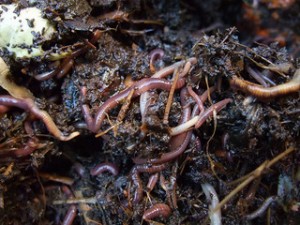 Life as a worm
Life as a worm
You’ve found a great place to live: plenty of rotting vegetation, roots that have expired, leaving nodules of nitrogen and plenty of other edible goodies, including fungi and an abundance of leaves right at the surface. Life couldn’t be better.
Then – the vibrations begin: your perfect world is torn apart with metal tines tossing you into the sunlight, crushing and plowing through the eggs carefully layed. Digging back under is easy, but everything is a tumult. Where there were tendrils of fungus and decaying roots, now lies a mixture of all. Plenty of air, to be sure, but surface nutrients and subsurface moisture are all a jumble. And what of the fungus? Months of growing and reaching out to roots for the symbiotic trade of sugars in exchange for nutrients needed now only here and there. Which way to grow? And how?
At least the weed seeds have it better: they’re close enough to the surface to be awakened by the sun. Their roots begin to reach down into the soil as their leaves begin to reach into the air, there will be food again for the fungus, hopefully soon enough to survive and strike up exchanges anew.
 But then the rain. Pelting the bare earth, a slurry forms on the surface, choking off the fresh air. The sun resumes, creating a crust almost impenetrable save for the most ardent and hardy of plants. New plants are introduced, but without the canopy of other plants, the rains will continue the onslaught of suffocating slurry drying to crust as the heat from day after day of sunlight drives the flora and fauna deeper into the soil.
But then the rain. Pelting the bare earth, a slurry forms on the surface, choking off the fresh air. The sun resumes, creating a crust almost impenetrable save for the most ardent and hardy of plants. New plants are introduced, but without the canopy of other plants, the rains will continue the onslaught of suffocating slurry drying to crust as the heat from day after day of sunlight drives the flora and fauna deeper into the soil.
Weeks pass, the added oxygen speeds the breakdown of the nutritive matter, creating a bloom of food for the plants and fungus alike – but only until the rains come again and wash out the nitrogen, potassium, calcium and phosphorus, creating a famine once again. Repeatedly the world of the worms are disturbed as weeds are pulled by the roots, carted off to who knows where. Still, it’s better than the pathways, where trodding feet and wheels crush the soil so compact that it’s nearly impossible to penetrate.
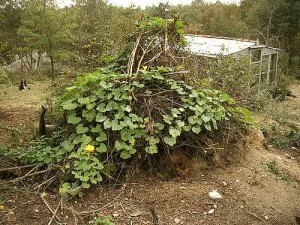 Yet, there is another place – under the compost heap, where nutrients slowly leach down, more as the days heat up, yet staying comfortable and cool. This no till area hasn’t got many roots, but at least it’s undisturbed. Perhaps this will be where we live this season. The periphery has many plants, only the occasional trodding while the weed eater cuts around it’s circumference, adding to the nutrients slowly, naturally. Here, where conditions are ideal and the forgotten garden seed takes root, we find the most bounteous of all the garden plants and the gardener scratching their heads wondering how they could possibly create such a place in their rows of average yielding plants.
Yet, there is another place – under the compost heap, where nutrients slowly leach down, more as the days heat up, yet staying comfortable and cool. This no till area hasn’t got many roots, but at least it’s undisturbed. Perhaps this will be where we live this season. The periphery has many plants, only the occasional trodding while the weed eater cuts around it’s circumference, adding to the nutrients slowly, naturally. Here, where conditions are ideal and the forgotten garden seed takes root, we find the most bounteous of all the garden plants and the gardener scratching their heads wondering how they could possibly create such a place in their rows of average yielding plants.
The no till garden does have many advantages. Yes, there are paths, but the crushing of the soil is cushioned by a healthy depth of wood chips. Nutrition in the garden proper is stacked in layers, suppressing the weed seeds and decomposing slowly, only occasionally disturbed by the harvesting of plants. Fungal tendrils reaching from the woody paths into the garden, transferring the nutrients to the crops in exchange for the sugars needed for growth and eventually bloom with their umbrella-like tops or other novel shapes.
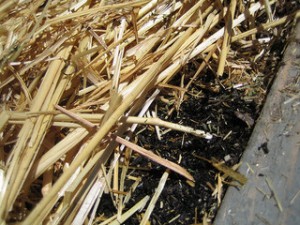 The soil texture, riddled with worm paths leave ample room for air to infiltrate, since roots need both air and water. Worm castings are abundant, and the surface – covered by manure, grass clippings and compost, naturally generate more nutrition as it is gently warmed by the sun while keeping the soil underneath cool and moist. Pastures and forest floors for eons have been built up in layers, disturbed occasionally by grazing animals who leave deposits of their own in return. Plants of all types and the supporting flora and fauna have adapted well to this environment. So, instead of questioning a worm as to how they’d like their home treated, don’t ask – and don’t till.
The soil texture, riddled with worm paths leave ample room for air to infiltrate, since roots need both air and water. Worm castings are abundant, and the surface – covered by manure, grass clippings and compost, naturally generate more nutrition as it is gently warmed by the sun while keeping the soil underneath cool and moist. Pastures and forest floors for eons have been built up in layers, disturbed occasionally by grazing animals who leave deposits of their own in return. Plants of all types and the supporting flora and fauna have adapted well to this environment. So, instead of questioning a worm as to how they’d like their home treated, don’t ask – and don’t till.
Based on the book Weedless Gardening by Lee Reich
by Lee Reich
Available at Amazon
Subscribe to our newsletter – Be the first to receive GardenHacker updates! Article briefs right to your mailbox! Unsubscribe any time. We don’t spam (mailchimp hates spam!) Learn more…
- Earthworm Photo Credit: Goosmurf – used under the Creative Commons Attribution license. http://www.flickr.com/photos/goosmurf/3828755105/sizes/l/in/photostream/
- Dry soil by Steven Minns. Used under the Creative Commons Attributions license – http://www.flickr.com/photos/stevenminns/3818797878/
- Photo Credit: hardworkinghippy. Used under the Creative Commons Attribution license. http://www.flickr.com/photos/hardworkinghippy/100033277/
- No-till garden by stellar678. Used under the Creative Commons Attribution license. http://www.flickr.com/photos/slybeck/3484900281/









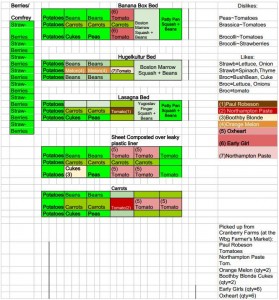
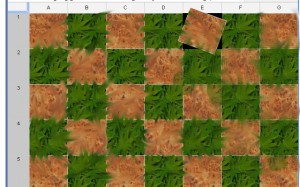







Recent Comments